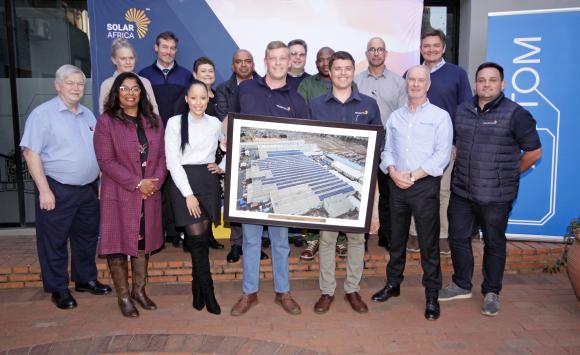Two years ago Static Power decided to extend its operations to cater to the growing trend by industrial and commercial businesses in South Africa to establish solar power generation systems of their own to offset both the unreliability of power supply from the national grid resulting from the ever increasing frequency of loadshedding and the higher electricity supply prices that Eskom has sought to impose on consumers.
The first step the business unit took was to appoint a suitably qualified and experienced PV solar practitioner as Engineering Manager to provide the overall leadership in marketing the new service, in which Static Power establishes the PV solar generation requirements of a potential customer, writes the specification and then goes to the market to assess suitable contractors, prepares tender documents and manages the tendering process and makes recommendations to clients accordingly, as well as taking overall project management responsibility for each project.
Jaco Weyers, who had handled various PV solar projects in South Africa over a period of 10 years prior to joining Static Power, was appointed to this key post. During that period he managed two large PV solar farms in the Northern Cape for an independent power producer (IPP), then as part of a team of consulting engineers he assisted in designing and building a 50MW PV solar farm for the De Wildt agricultural area near Brits, North West Province, assisted in the design, procurement and erection of a 220kW dual-axis “proof of concept” tracking platform PV solar plant for the CSIR in Pretoria, and assisted in designing and building smaller fixed solar rooftop PV solar installations in Gauteng and Cape Town.

The new department has initially focussed on providing PV solar systems for divisions within ACTOM. To date it has sourced contractors for the design, supply and erection of PV solar generation systems for ACTOM Turbo Machines in Sasolburg, MV Switchgear at Knights, Germiston, and Reid & Mitchell (R&M) in Benoni.
All the above projects were done on a turnkey basis by contractors selected by Static Power through a tendering process.
“The client makes the final selection based on our recommendation and appoints Static Power to do the project implementation, project management, final handover and sign-off of each project to the client upon completion,” Jaco explained.
ACTOM Turbo’s 200kW capacity grid-tied PV solar system, commenced operation early last year. MV Switchgear’s 1.1MW grid-tied PV solar system, which What’s Watt featured in its June issue this year, went live in July, with an official handover event being held at Knights on July 19.
Reid & Mitchell has gone a different route than the other two divisions, installing a 50kW hybrid PV solar system, which, unlike the others, includes a lithium batteries backup system and is designed to supply continuous solar-generated power supply independently of the grid.
The 1.1MW of power the PV solar system at Knights is capable of generating is just short of MV Switchgear’s total power consumption at peak load and is about 50% of the peak load drawn by all the factories at the Knights site.
“Due to some unexpected complications that arose the system had to be partly redesigned during the course of the project,” Jaco said.
“The roof was found not to be designed to handle the additional load of the PV solar system and some roof space was therefore unavailable for use in the project, so we had to redesign the project using the largest commercial solar panel available at that stage to make the most of the available area. A total of 1676 large panels therefore were used where the initial aim was to use 2230 small wattage panels,” Jaco concluded.
